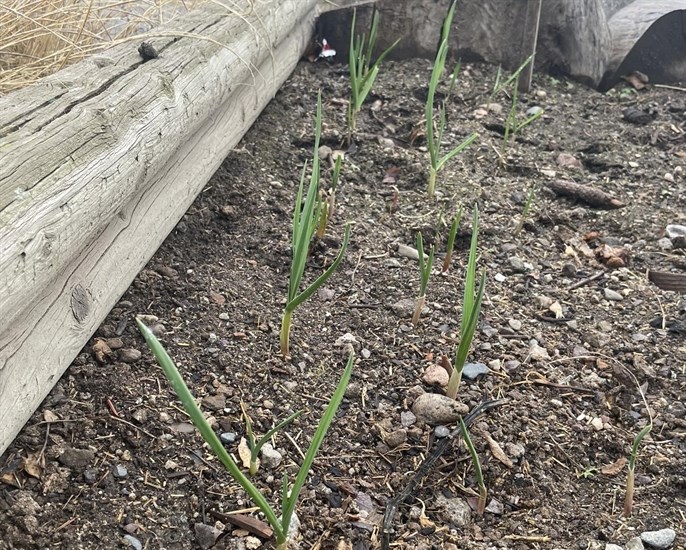Winter garlic? It's still growing in bizarre Kamloops, Okanagan winter

Garlic has started to grow in Kamloops and the Okanagan due to an unseasonably warm start to the winter, leaving many gardeners wondering if a cold snap will kill the bulbous flowering plants and ruin this year’s harvest.
Shirley Wells grows award winning garlic on her farm in Kamloops and some of the varietals have grown a few feet tall already this winter. She said it isn't common for garlic to be growing at this time of year but she has seen it happen during warm winters in the past.
The first winter it happened, she was alarmed and horrified and thought the plants weren't going to make it.
READ MORE: BC looking for opinions on emergency support services during disastrous wildfire season
“Now I know its normal and don’t panic because I’ve seen how they’ve turned out,” Wells said.
If a gardener does enough things right, their garlic will survive a cold snap and begin growing again in spring, she said. Root development is key, followed by insulation and watering.
“Now I know when a heavy cold comes it’ll kill the tops but if the bulb is healthy and has formed roots it will grow again,” she said. “The roots need be developed enough to be anchored to the ground in order to withstand the freezing and thawing soils during winter.”
She said if the tips of the plant are burned from the cold, the healthy part of the leaf will still photosynthesize in spring.
READ MORE: Summer flowers are blooming again in Kamloops and the Okanagan
Insulation is a good way to protect the bulbs from the cold and heat, and keep some moisture in the ground. Wells has 3 or 4 inches of shavings on her garlic she keeps on until harvest.
“There should be mulch on them to insulate them from extreme cold and prevent weed growth, garlic can’t compete with weeds,” she said. “Some people don’t insulate because it takes money and effort, but then it takes so much time to pull the weeds, it’s their choice.”
The roots of the garlic need to be moist so water needs to get down to the root level, “not just the top half inch.”
“Garlic needs consistent water when it starts growing, if the roots dry out it’ll stop growing and won't be able to restart.”
Some gardeners are wondering if they should plant garlic now, because of the warm weather, but Wells advised against it because roots have to form before it freezes.
“I don’t have all the answers and can’t control the weather, but we can focus on things we can control and learn what works in our areas by experimenting and taking note of it.”
Wells is the owner of Laughing Swan Farm which produces tens of thousands of bulbs of seventeen different kinds of garlic each year and some go on to win awards at festivals every year.
She provides learning resources for growing garlic here.
To contact a reporter for this story, email Shannon Ainslie or call 250-819-6089 or email the editor. You can also submit photos, videos or news tips to the newsroom and be entered to win a monthly prize draw.
We welcome your comments and opinions on our stories but play nice. We won't censor or delete comments unless they contain off-topic statements or links, unnecessary vulgarity, false facts, spam or obviously fake profiles. If you have any concerns about what you see in comments, email the editor in the link above. SUBSCRIBE to our awesome newsletter here.


